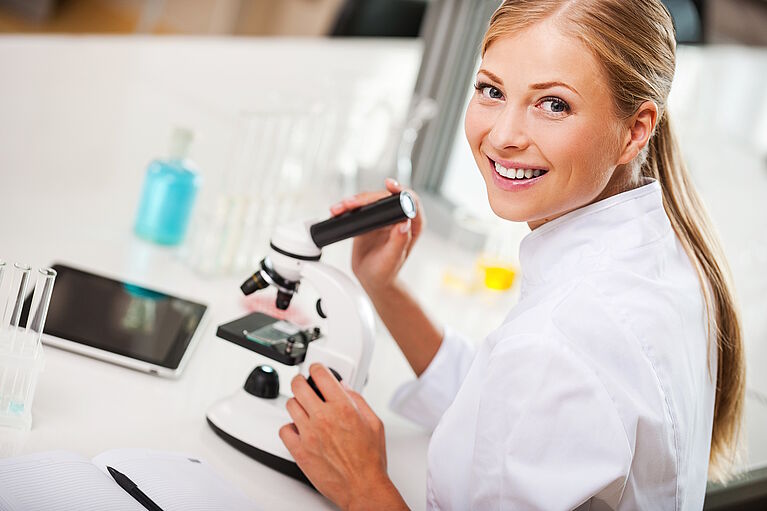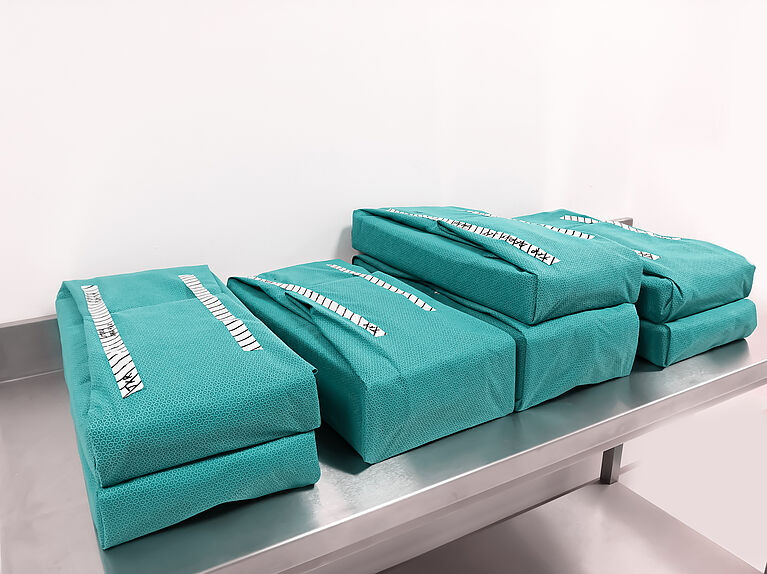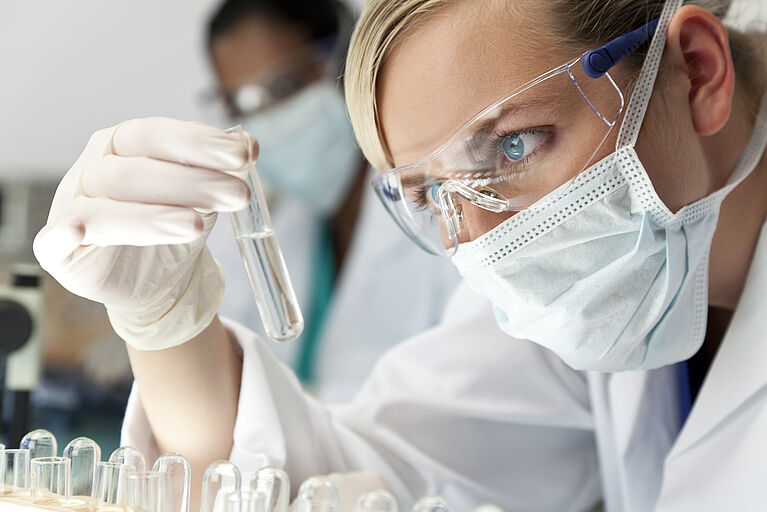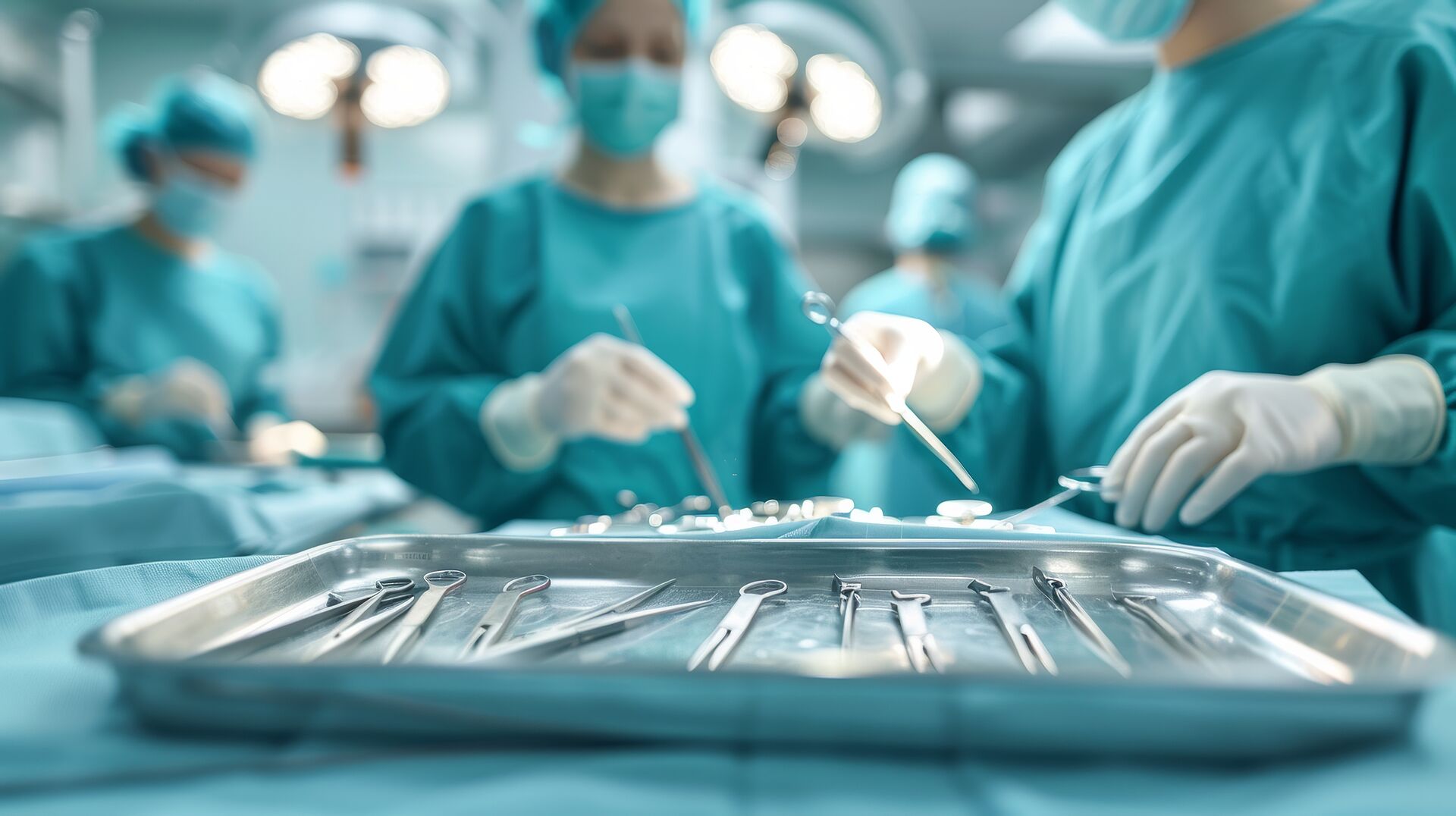The processing of medical devices includes cleaning, disinfection and sterilisation to ensure their safe use and reuse. The procedures must be validated and regularly reviewed.

Validation of processing in accordance with DIN EN ISO 17664
Review of instructions for use, cleaning validation according to DIN EN ISO 17664 and DIN/TS 5343
DIN EN ISO 17664 is crucial for the safety of medical devices in clinical practice. This standard specifies the requirements for the processing of medical devices that come into direct or indirect contact with patients prior to use or reuse. It covers the entire processing process, including cleaning, disinfection and sterilisation. The two parts of DIN EN ISO 17664 describe the information to be provided by the medical device manufacturer for processing – DIN EN ISO 17664-1 for critical and semi-critical medical devices, DIN EN ISO 17664-2 for non-critical medical devices.
Manufacturer information:
Manufacturers must provide detailed instructions for processing their products, including validation of the procedures.
Risk analysis:
A risk analysis in accordance with DIN EN ISO 14971 is required to ensure that the processing procedures are safe and effective.
Validation:
The cleaning, disinfection and sterilisation procedures must be validated and regularly reviewed. The DIN/TS 5343 standard also provides guidance on the validation process. This includes defining acceptance criteria for cleanliness and selecting test procedures.
Testing:
After processing, all previously defined parameters must meet the acceptance criteria, for example, bioburden testing in accordance with EN ISO 11737-1, testing for bacterial endotoxins in the LAL test, cytotoxicity in accordance with DIN EN ISO 10993-5, particle measurements, detection of protein residues (protein determination using BCA) or organic contaminants (TOC) and material changes by means of chemical characterisation (according to DIN EN ISO 10993-18).
We check the information in the instruction for use (IFU) for you to validate processing procedures
In accordance with the manufacturer's IFU, we can check the following process steps:
- Pre-cleaning
- manual cleaning
- machine cleaning (in a washer-disinfector (WD) or commercial washer-extractor or domestic washing machine)
- thermal, chemothermal or chemical disinfection
- drying and
- steam sterilisation
We then check and evaluate the cleanliness of the product using the test procedures and acceptance criteria specified by you.

Reprocessing
We offer cleaning, disinfection and sterilisation of reusable medical devices in standardised processes for testing purposes or end-of-life simulations.
Disinfection can be carried out according to customer requirements or in accordance with listed procedures (according to RKI or VAH).
Test equipment used:
- Cleaning and disinfection device (RDG)
- Commercial washer-extractor
- Steriliser for steam sterilisation
End-of-life simulations
End-of-life simulations test the maximum service life of reusable medical devices through repeated reprocessing cycles.
These tests evaluate the biological safety and functionality of the products until the end of their product life cycle.

Detection of cleaning agent residues
The determination of TOC (total organic carbon) measures the water-soluble organic residues on medical devices. THC (total hydrocarbon) measurement can be used to detect water-insoluble contaminants containing hydrocarbons.


